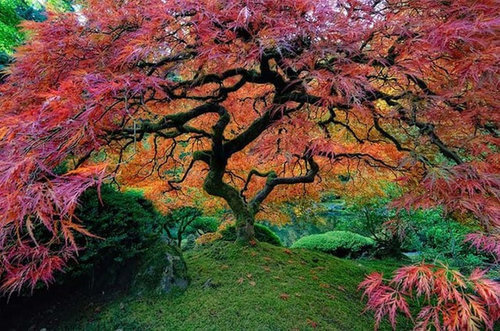Japanese maple trees are among the most valuable and attractive trees present in any of the gardens. They are low-maintenance trees, unlike Clusias. These trees are mostly found in purple, orange, yellow, green, and red colors.
They grow up to a height of 30 m tall in length. The height of the tree can never be restricted. It will grow as per the law of nature. So, never try to! But if you plant the tree correctly, it will grow twice as fast and live twice if it is incorrectly planted.
Improper planting and inadequate soil preparation lead to the death of the plant. The location of the tree should be protected from the strong winds. Japanese maple trees require slightly acidic soils containing organic matter.
Special care is to be taken in case of heavy clay. Never plant this tree where there is too much exposure. Because the direct sun can burn the leaves, plant them so the light is balanced and cannot harm the tree anyway.
Too much light can cause the attractive and delicate leaves to turn green. The morning and the afternoon sun suit these trees the best. Every year these trees grow up to 2 feet tall in length. Initially, these trees grow faster, but when they reach maturity level, the growth slows down.
Do not prune the little trees much like you prune the palm trees or oal trees. When these trees grow up, it looks like bonsai specimens. You can also keep bonsai at your home for those who do not have the space to grow a Japanese maple tree.
If you are having your property, waiting for what? Do plant such beautiful trees to enhance and emphasize your property. The shape of these maple leaves looks so attractive when they fall off during the winter season.
Apart from the looks and beauty, these Japanese maple trees are very complicated, and it is difficult to prune them. Various sorts of skills are required for pruning.
Taking care and maintaining beauty is not an easy task, so I suggest pruning professionals care for your trees. Please read the article below to know more about these trees and prune and take care of them.
What Is Pruning?
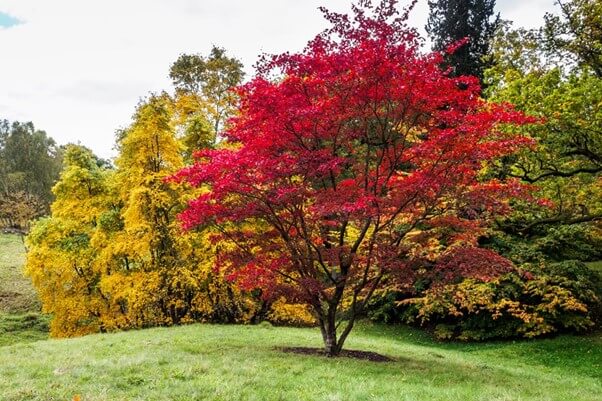
Pruning is nothing but an art. It requires a lot of knowledge in plant botany and biology. Of course, ordinary people can do art, but these normal people cannot bring perfection. So, this process requires perfect people like professionals.
It is an activity of removing and trimming off the non-productive branches from a tree. This is done to ensure a good healthy tree that can produce beautiful and delicate leaves. This is one of the best things people do for the trees.
It is like insurance. Insurance is done to secure a human’s life. Likewise, pruning is performed to ensure the safety of the tree. This activity allows the trees to look more neat, clean, and green.
The Japanese maple trees are an exotic creation of nature, so their branching pattern is a bit complicated, so these trees require experts for the job to be done.
Why Prune Japanese Maple Trees?
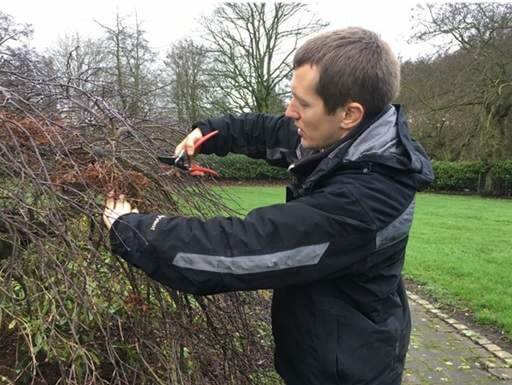
Maintaining the health of these beauties is very important, or else you might miss a fair chance to fall in love with your garden. Pruning is not a daily job. But try to follow the process several times a year.
This ensures good health. Light pruning can be done at any point in time, but this process exerts some energy.
I prefer pruning twice a year – in the summer and the winter season. You can also not choose to prune your tree. With time, you will view the changes that the tree is getting fatter and developing lateral branches.
Growth and structure are the two most essential things in a tree’s lifetime. Without growth and structure, you will be unable to see a Japanese maple’s beauty. So, this pruning helps these trees create growth habits and structure as time passes by.
Pruning also helps these trees to stay free from diseases. Diseases are hazardous for the health of the trees. There are also some diseases which lead the trees to death. In a tree, finding dead branches are very common, so pruning includes removing damaged branches from these trees.
A tree can grow independently on this planet, but society’s people do not accept unwanted growth. So, pruning helps to remove the unwanted branches as well.
Finally, branches should never be sober. Weight leads to several problems, so branches should be maintained, trimmed, and cut to reduce weight.
Care
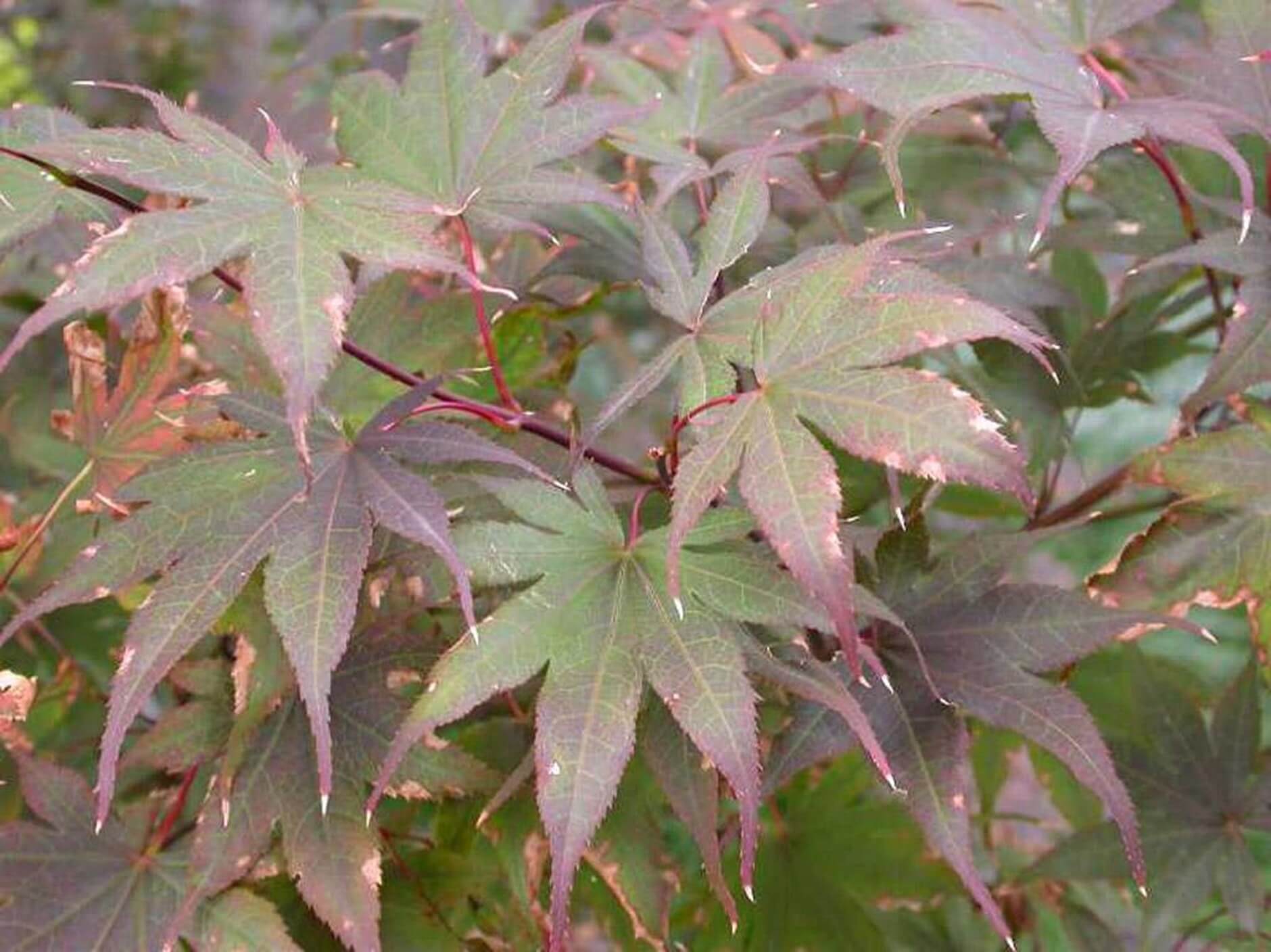
Watering is essential. Water your plant regularly after planting the seed, until and unless the plant gets established. You may skip watering in any of the seasons but never do this during the summer season. Keep your plant moist.
The central part of a tree is its roots, so the roots should always be kept protected from both heat and the cold. If you are planning to grow your Japanese maple tree in a container, you must reduce watering. The mulch should be kept a few inches away from the trunk of the tree.
Fertilizer is to be applied during the spring season. Never apply fertilizer after May.
These trees do not suffer from any such serious diseases. Spider mites are common in every plant.
If you follow some maintenance tips, you will efficiently prevent those creatures from destroying the plant.
Timing
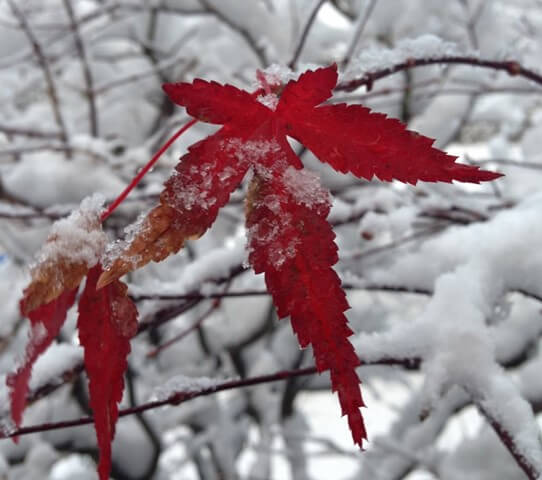
The best time for pruning the Japanese maple trees in the winter season, when the leaves fall off. Make sure there is no threat of frost around the planted tree. You can also prune these trees during July and August. But pruning these maples during the last frost of the year is the best. A top-rated tree trimming service provider in Houston notes that the period when Japanese Maples respond well to tree trimming is right after they enter their dormant stage.
The spring season is not a good time to grow these trees because the sap begins to develop at this point. During this period, the leaves remain weak because they just emerged after the fall in the winter season.
Especially this time is the least preferred time to prune. Structural pruning should be done during the winter, and fine pruning should be done during the late spring after all the leaves come out.
The summer season (May and June) is also ideal for pruning, but it is better to maintain the timeline mentioned above. These trees can adjust with every season, so selectively pruning is the best thing to do.
If you do not choose to bring professionals to your garden for pruning, do take some of your valuable time and justify how to prune? Which branches to prune? Is there any sort of unwanted growth visible?
These kinds of questions are essential before pruning because without knowing your tree’s nature. Do not remove several branches at a time. Avoid doing this activity! This might cause decaying inside the trunk.
Pruning is a process that takes time and never leaves your work when half has been done. Always complete the entire process before taking a rest!
Where to Buy?
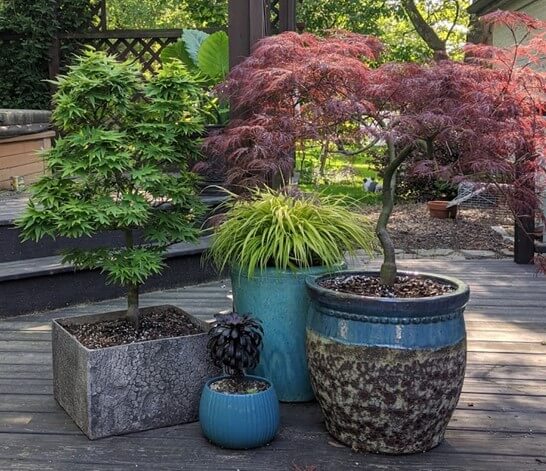
Japanese maple trees are exquisite to look at. The seeds are available at
Let us be a bit more specific about it! You may also have a desire to have an artificial Japanese maple plant at your home because you do not choose to do gardening, or you might not be having so much time.
No products found.
Living things like plants need care! But apart from all these, you may want a piece of beauty at a corner of your house.
Here you go!
This is a beautiful artificial Japanese maple floor plant. This comes without a pot. You may buy a ceramic pot for keeping this plant upon. You can place this either at the corner of your living or bedroom.
- A SUPERIOR SELECTION FOR HOT HUMID CLIMATES - HOLDS ITS COLOR EXTREMELY WELL!
- ONE OF THE MOST VIGOROUS WEEPING JAPANESE MAPLES!
- BRIGHT SCARLET FALL COLOR!
- A CASCADING RED LACE LEAF WEEPER!
Tips
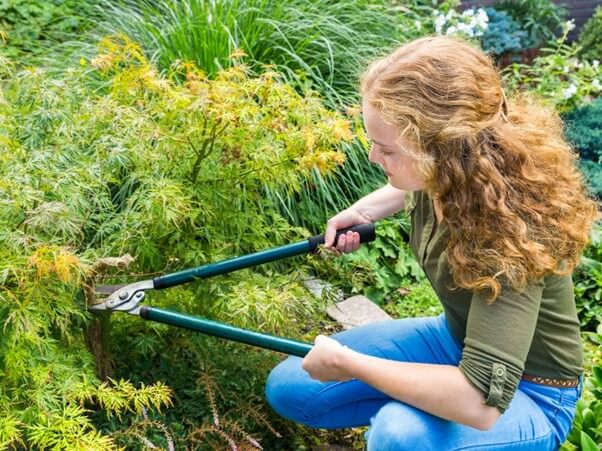
Remove the dead and the damaged branches from the interior. Never try to reshape. This will bring uncertainty, and the tree will not provide a perfect canopy on the top.
Please do not disturb the growing pattern while pruning because it is intended to grow according to nature’s laws. Do not cut off more than half of the mass of the tree.
Disinfect the tools after each time of usage, or else the tools might spread diseases to your tree. In case your tree is ill, try to minimize the cuts. Wait for your tree to heal before pruning. If necessary, then limit the cuts. But nurturing is the wisest thing to do if the tree is ill during the pruning.
Or else it is better not to prune during this period. Avoid pruning your trees that are below fifteen years. Still, it is your choice whether you want your Japanese maple to be skinny or not!
But above all, it is best to prune your tree once it becomes fifteen years. Pruning is nothing but trimming of the trees. It requires a lot of practice because it is an art. Proper tools and various techniques are essential to perform the activity.

